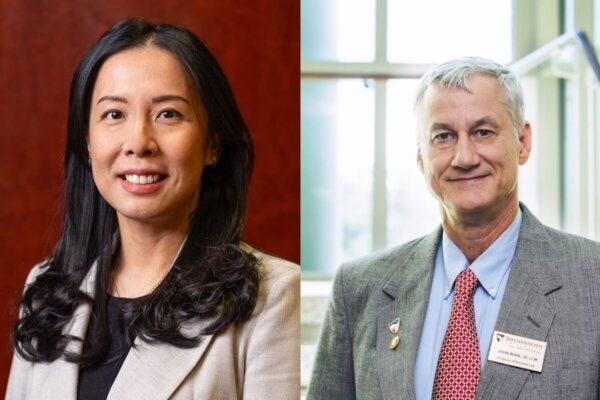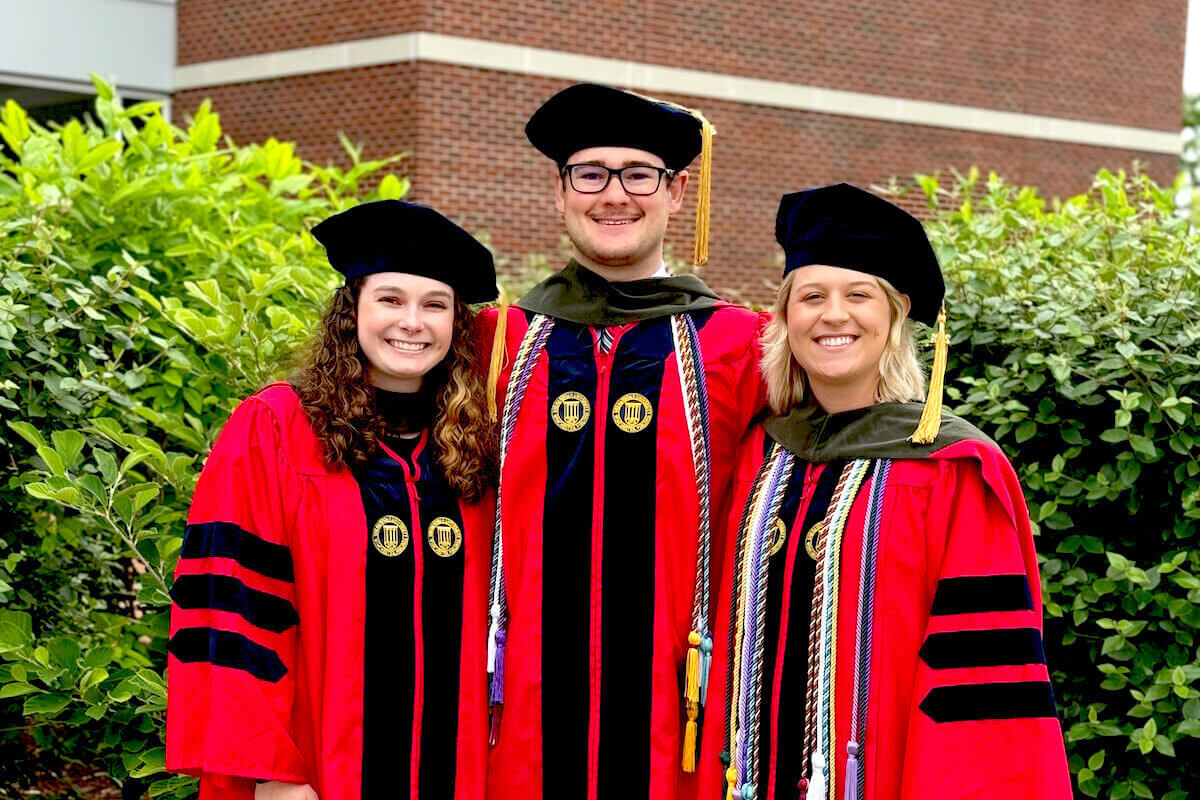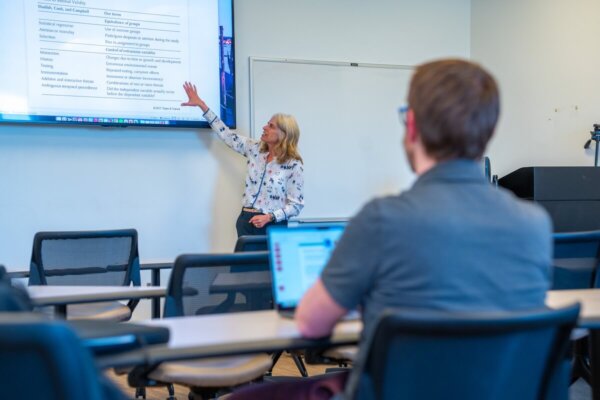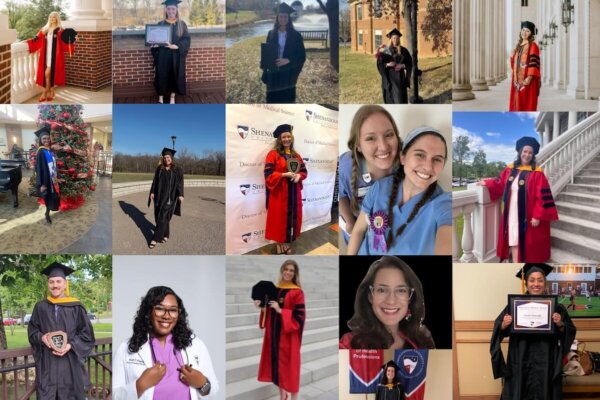Shenandoah VR Design Students Showcase Their Work At Prestigious Conference
Four students presented projects at I/ITSEC in Orlando, Florida
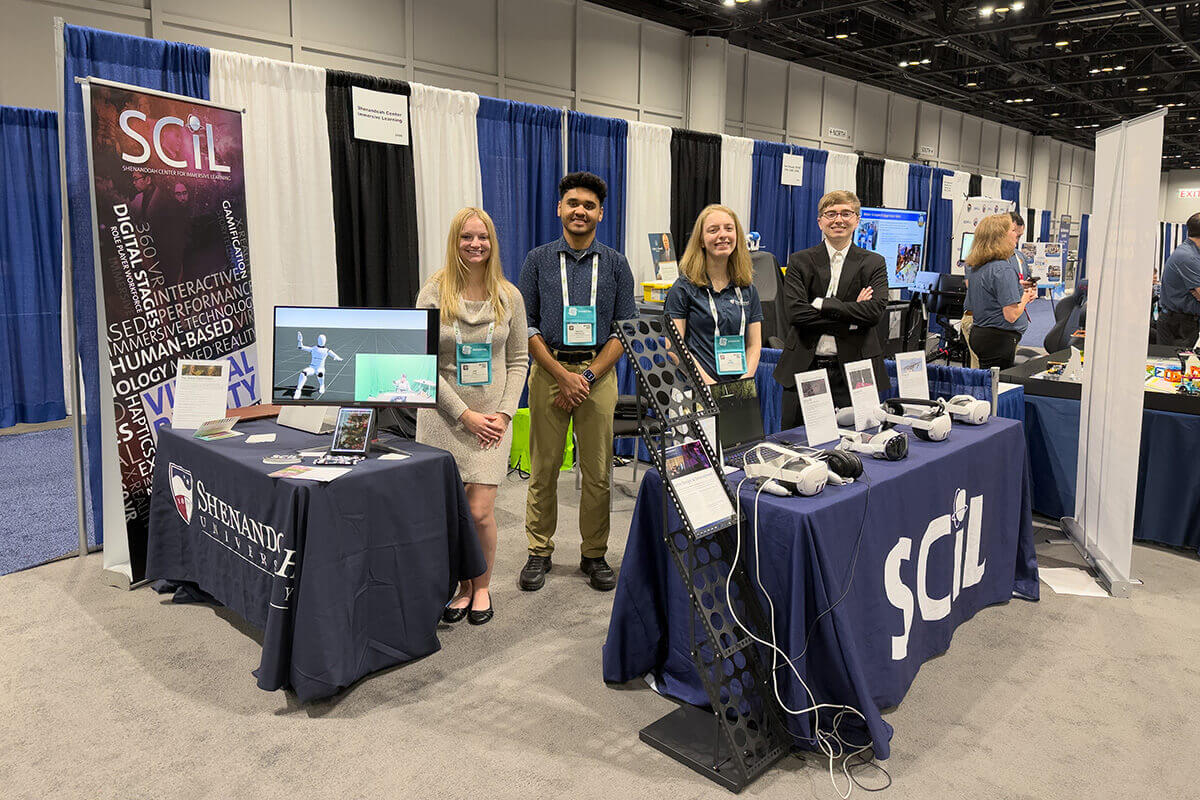
Students in Shenandoah University’s virtual reality design program had the opportunity to showcase some of their work at the 2024 Interservice/Industry Training, Simulation and Education Conference (I/ITSEC), the world’s largest modeling, simulation and training event held each December in Orlando, Florida.
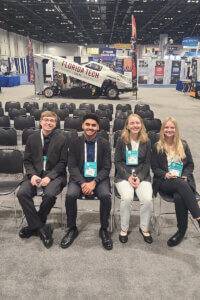 Seniors Ann Fink ’25, Jacob Eisenhart ’25, Michael Reynolds ’25, and Zoë Grimes ’25 each presented their individual projects at the prestigious conference, which had over 18,500 registrants and attracted nearly 10,000 exhibit visitors this year.
Seniors Ann Fink ’25, Jacob Eisenhart ’25, Michael Reynolds ’25, and Zoë Grimes ’25 each presented their individual projects at the prestigious conference, which had over 18,500 registrants and attracted nearly 10,000 exhibit visitors this year.
The opportunity to present their projects, which were developed in upper-level classes of their major and/or as part of their work at the Shenandoah Center for Immersive Learning (SCiL) at SU, was truly a unique one for Shenandoah’s students. Mohammad Obeid, Ph.D., co-director of SCiL and program director of SU’s Bachelor of Science in virtual and augmented reality design, worked directly with I/ITSEC organizers to add a new feature to the weeklong conference’s STEM exhibit that spotlights a higher-education institution. Shenandoah was chosen for the pilot of this new addition.
“It was rewarding to see our students showcase the hard work and dedication they put into these projects on such a prestigious stage. This venue provided them with a valuable opportunity to share their work in a professional setting, engage with industry experts, and gain real-world experience. We are grateful to our colleagues at I/ITSEC for including SU in this initiative and look forward to continuing this collaboration in the years to come.”
Mohammad Obeid, Ph.D., director of the Bachelor of Science in virtual reality design program
As part of the conference, Obeid and the students presented about the university’s AR/VR program and had the opportunity to host a live demonstration of their individual immersive technology projects at SU’s designated booth in the exhibit hall.
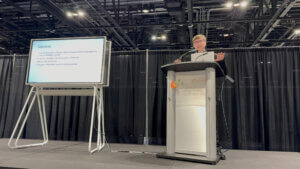 Fink presented on “Ghosts of the Argonne,” a educational virtual reality project, led by Nathan Prestopnik, Ph.D, co-director of SCiL and program director of SU’s Bachelor of Arts in virtual and augmented reality design, that allows users to assume the role of a World War I artilleryman and operate a French 75 field gun.
Fink presented on “Ghosts of the Argonne,” a educational virtual reality project, led by Nathan Prestopnik, Ph.D, co-director of SCiL and program director of SU’s Bachelor of Arts in virtual and augmented reality design, that allows users to assume the role of a World War I artilleryman and operate a French 75 field gun.
“It was a truly amazing experience,” Fink said. “I was happy to have the opportunity to meet and network with a lot of people who were interested in the projects we presented and worked on.”
Eisenhart’s presentation focused on “Drone VR,” a simulation program, led by Obeid and supported by the National Science Foundation (NSF) through the National Center for Autonomous Technologies (NCAT), that trains users in the assembly and assessment of industrial-grade drones.
Reynolds presented on “IVR Framework,” a curation platform for creating training experiences in virtual reality. He showcased the framework he developed with Obeid to empower other developers and programmers to seamlessly and rapidly generate training and education modules for various domains.
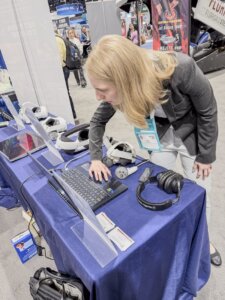 Grimes presented on “Chemistry VR,” her term project in one of Obeid’s classes that she developed with colleague and SU alum Illia Kozlov ’24 (information technology). This VR experience allows individuals to interactively learn about the fundamentals and safety principles of a chemistry lab.
Grimes presented on “Chemistry VR,” her term project in one of Obeid’s classes that she developed with colleague and SU alum Illia Kozlov ’24 (information technology). This VR experience allows individuals to interactively learn about the fundamentals and safety principles of a chemistry lab.
I/ITSEC is organized and sponsored by the National Training & Simulation Association (NTSA), an affiliate subsidiary of the National Defense Industrial Association (NDIA), and consists of peer-reviewed paper presentations, tutorials, special events, professional workshops, a commercial exhibit hall, a serious games competition and STEM events for teachers and secondary students, according to the conference website. Leadership of the conference, which began in 1966 as the Naval Training Device Center/Industry Conference, is shared among the U.S. Army, Air Force, Marines Corps, Navy, Space Force, and Office of the Secretary of Defense.
